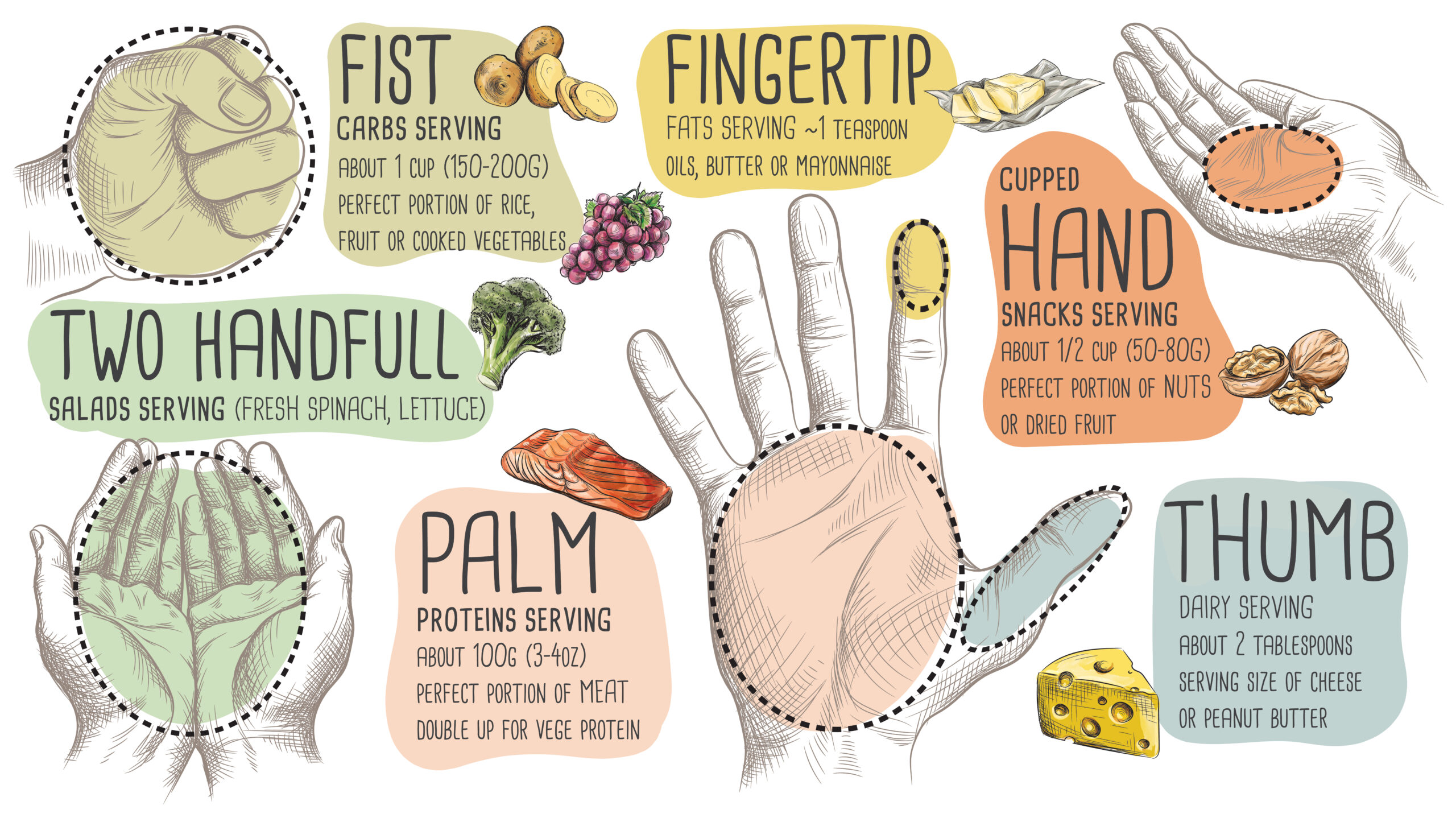Portion Sizing – an At-Home Guide
Here at Love Your Gut we have been looking at portion sizing. Having a variety and balance of different types of food is important for your overall health. At Love Your Gut we know that part of this balance is being able to understand portion sizing because, obviously, larger or smaller portion sizes can lead to your body getting too much or too little of what it needs to stay healthy.

The Eatwell Guide
The Eatwell Guide is a useful resource to help you put the right kinds of food on your plate in the correct proportions. Of course, every person is different so portion size recommendations vary from individual to individual. The Eatwell Guide will help with portion sizing by adjusting for gender, height, weight and activity level – and can be downloaded at https://www.gov.uk/government/publications/the-eatwell-guide
Measuring a Portion Size – Your At-Home Guide!
Eating a healthy, balanced diet isn’t only about what you eat, but also about how much you eat. So, using easy at-home ways to measure your portion sizes is a great place to start! Below is an infographic that gives you an easy guide to determine portion sizing, using your hands:

Below is a more detailed description of typical portion sizes within specific food groups, as well as how many portions are recommended every day:
Fruit and Vegetables (≥5 portions per day)
A portion of fruit or vegetables is 80g. This equates to around:
- 1 medium sized piece of fruit such as a banana, apple or pear
- 2 or more small fruits such as satsumas, kiwi or plums
- 1 large handful of berries, cherries or grapes
- 3 heaped tablespoons of carrots, peas, corn, mixed vegetables
- 2 heaped handfuls of salad
Starchy Carbohydrates (3-4 portions per day)
- 1 fist size potato or 2 egg-sized new potatoes
- 1 small roll or slice of bread
- 2 handfuls of dried pasta shells
- 1 handful of uncooked rice
3 handfuls of breakfast cereal Dairy and alternatives (2-3 portions per day)
- 1 glass of cow’s milk, or 1 glass of a milk-alternative that’s been fortified with calcium and other nutrients
- 3 tablespoons yoghurt or one small yoghurt pot
- A matchbox size or index finger length of cheese
Beans, pulses, fish, eggs, meat and other proteins (2-3 portions per day)1 palm size of cooked meat, fish or poultry
- 2 eggs
- 3-4 tablespoons of beans, pulses or tofu
- 1 tablespoon of nuts (try to avoid salted, dry-roasted or flavoured nuts)
Fluids (6-8 glasses per day)
- Fluids can include water, low-fat milk or fortified milk-alternatives, tea and coffee, fruit juice and other sugar-free drinks
Oils and spreads (used sparingly every day)
- 1 teaspoon of oil or butter
*High sugar, salt, fat and processed foods should be limited and eaten in small portions.
At first, portion sizing may be confusing. But, being aware of how much should be filling your plate will make it easier to grasp and ultimately turn into a habit. If portion sizing is something you struggle with, reducing your plate size can also help – perception is everything! On that note, let’s go and create some healthy habits!
Eating Well with Love Your Gut
See more information here
References:
- Public Health England (2016) The Eatwell Guide. Available at: https://www.gov.uk/government/publications/the-eatwell-guide (Accessed March 2021).
- British Nutrition Foundation (2019) Finding you Balance – get portion wise. Available at: https://www.nutrition.org.uk/healthyliving/find-your-balance/portionwise.html (Accessed March 2021).
- British Dietetic Association (2016) Portion Sizes – Food Fact Sheet. Available at: https://www.bda.uk.com/resource/food-facts-portion-sizes.html (Accessed March 2021).

